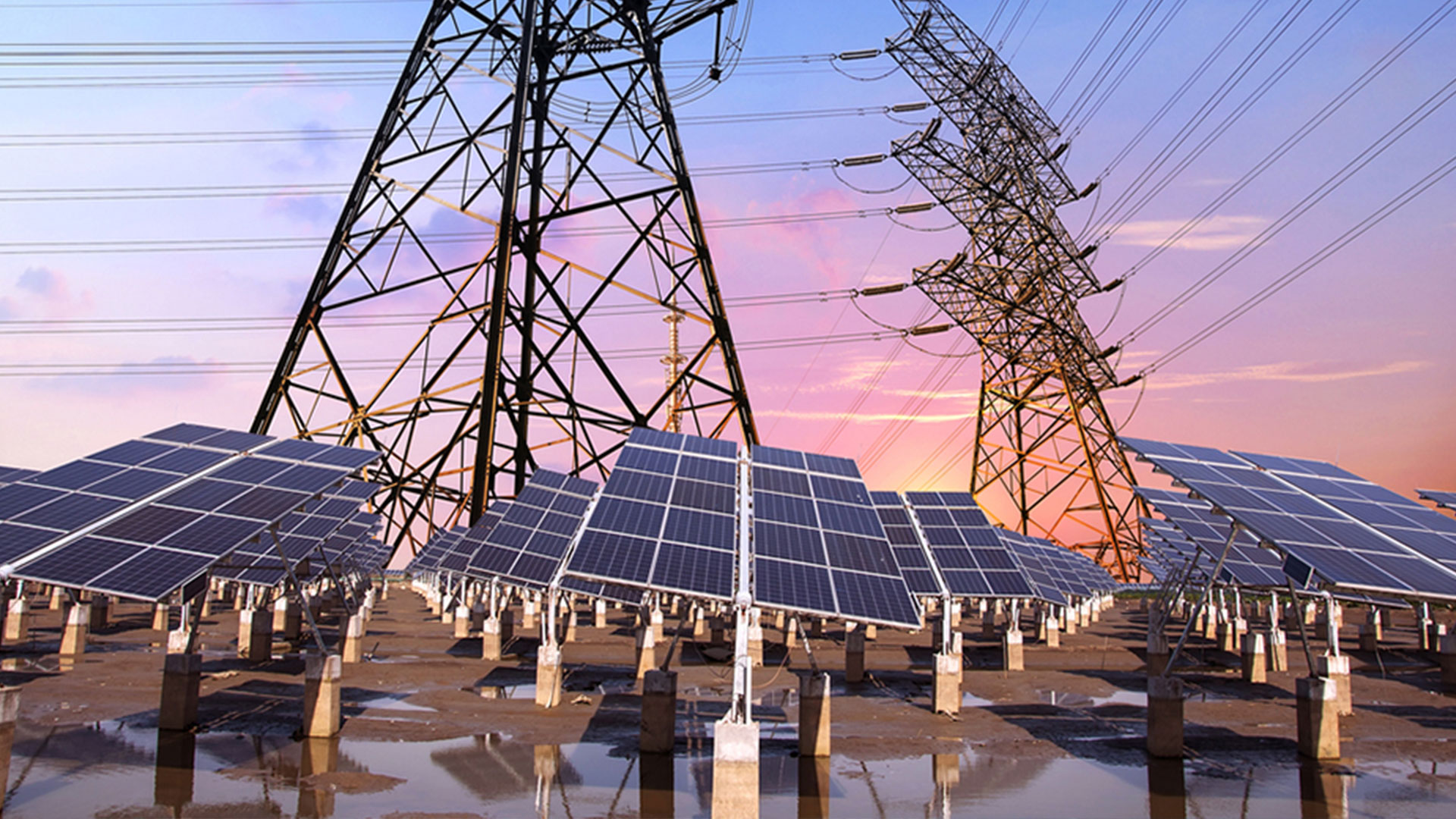Global
Global battery storage pipeline doubles to reach 3.4GW
According to IHS Markit, utility-side-of-meter energy storage has doubled over the last year to 3.4 gigawatts. The majority derives from announcements of projects in Asia and Australia, demonstrating the growing importance of these regions in the energy space. The pipeline in EMEA slowed in comparison to Q4 2016 to 30 MW of growth.
DNV GL-led consortium to develop framework for business cases for community battery storage
The consortium, featuring Alfen and Peeks, will assess community battery systems and the economic and social practicalities. This includes examining the features of a successful community energy storage business, and developing an overall framework for implementing community storage on a wider scale.
Africa
Africa Energy Forum (AEF): Storage must happen in Africa
At a panel event hosted by the International Finance Corporation (IFC) at the AEF conference, Yasser Charafi and Soumya Banerjee, Principal Investment Officers at the IFC, highlighted the imperative of deploying storage on the African continent. Storage may improve issues of power quality, assist renewable energy integration into weaker grids, enable off grid solutions and allow Africa to build on the progress in the USA and Europe but starting from a clean slate. If you would like further insights into the AEF conference, please get in touch.
Energy storage will transform Middle East and Africa’s energy market over the next 10 years
Sami Khoreibi, CEO of Enviromena, speaking on the transforming energy panel at the World Economic Forum on the Middle East and North Africa in Jordan, considers the value proposition of storage and renewables in the Middle East and Africa.
Asia Pacific
Chinese lithium-ion battery makers poised to cut domestic prices 40 per cent
Reductions in electric vehicle subsidies have caused manufacturers to reduce their margins on lithium-ion batteries sold in China. These reductions have severely impacted electric vehicle sales. Global battery markets are unlikely to be affected however.
Lyon to build 330-MW solar park with storage in South Australia
Lyon, backed by Magnetar Capital, is planning to construct a 330 MW solar farm and 100 MW of storage capacity in Riverland, South Australia. The USD 761.6 million deal will be equity financed, with construction due to commence in June 2017 and completion occurring at the end of 2017. This forms part of an overall plan to build 1 GW of solar power and 500 MWh of storage in Australia by 2020.
Lakeland Solar & Storage
The Lakeland Solar and Storage project consisting of the installation of 10.8 MWac of solar PV incorporating a 1.4 MW / 5.3 MWh battery is due to commission during June 2017. As the first utility-scale grid connected battery to come online in Australia, the project is expected to provide valuable data to the industry regarding the value of batteries combined with PV. The knowledge will further assist utility scale PV to become more commercially competitive and will lead to a significant increase in deployment.
Europe
Eneco and Mitsubishi plan Europe’s largest battery, pitching storage against coal and gas
Mitsubishi and Eneco are producing a battery to compete with gas and coal plants on the primary reserve market in Germany. The joint-venture aims to create Europe’s largest battery plant, with 48 MW and 50 MWh of capacity near the Danish border. According to Eneco, NEC have offered a 15-year warranty period for the lithium-ion battery system.
Gaelectric’s Larne energy storage project gets EUR-90m EU grant
The European Commission has provided a EUR 90 million grant for a 330 MW energy storage scheme in Larne, Northern Ireland. Once implemented the project will store excess renewable energy in the form of compressed air in geological caverns. This forms part of the EU’s wider investment of EUR 444 million in various other energy infrastructure projects in the electricity, gas and smart grid sectors under the Connecting Europe Facility.
ABB delivers first urban battery storage solution in Denmark to support renewables
ABB has commissioned the first urban lithium-ion based battery energy storage system in Denmark to assist with improving the predictability and utilisation of solar and wind energy, in addition to developing future energy systems. The storage system is part of the “EnergyLab Nordhavn” project implemented in the Nordhavn district of Copenhagen.
Northvolt will build a USD 4 billion battery manufacturing facility in Scandinavia
Northvolt is hoping to secure further investment in order to build a USD 4 billion battery plant capable of manufacturing 32 GWh of batteries by 2023. The company has already secured funds from Vattenfall and the Swedish government, enabling it to open a small office and recruit production experts and engineers. They will select a location shortly and will seek to raise USD 60 million to fund a small-scale pilot line in the coming months.
VLC energy to develop 50MW battery storage plants in UK
VLC, a joint-venture between Low Carbon and Vitol Group subsidiary VPI Immingham, are to build two energy storage plants in England. VLC has won contracts for the two plants in the National Grid’s Enhanced Frequency Response (EFR) tender and the Capacity Market Auction to supply power in 2020. VLC plans to connect to the UK electricity grid by the end of 2017 and claims it will save GBP 200 million for National Grid (across all EFR contracts) by minimising wasted energy.
Vattenfall partners BMW for battery storage at largest onshore wind farm
Vattenfall has partnered with BMW Group to add battery storage capabilities at its largest onshore wind farm in Wales. The agreement will see the Pen y Cymoedd wind farm, which reached its full generation capacity in May 2017, equipped with up to 1,000 lithium-ion batteries each with a capacity of 33 kWh and using the same battery technology as that used within the BMW i3 car. The combined capacity of 33 MWh will be managed using a BMW-designed control system, and work is expected to commence in July.
Enel buys up lucrative UK project in ‘one of the most advanced markets’ for battery storage
Enel will pay approximately GBP 17 million for the purchase a 25MW / 12.5 MWh battery storage project from Element Power. In the 2016 EFR tender, the Tynemouth project was awarded a GBP 11.49/MW of EFR/h contract. Construction completion is expected in February 2018. According to Enel, the project proved attractive due to short construction times and fast routes to market.
North America
Morgan Stanley: storage in the utility sector ‘will grow more than the market anticipates’
Morgan Stanley have stated that battery storage growth remains “underappreciated” by members of the electricity market. In a recent report, they predict the storage market could expand by 70 per cent from the current total of USD 30 billion if the Federal Energy Regulatory Commission permits storage deployments in deregulated markets.
21 US states have energy storage pipelines of 20MW or more
Research compiled by the US Energy Storage Data Hub suggests that 21 US states now have 20 MW of energy storage projects that are in construction, proposed or operational. With support at the state and federal level, the energy storage pipeline will continue to grow, and is predicted to surpass 1 GW of deployed front-of-meter storage in 2018.
E.ON co-locates energy storage projects with Texas wind farms
E.ON North America will co-locate its Texas Waves energy storage projects with the company’s existing Pyron and Inadale wind farms in West Texas. Texas Waves consists of two 9.9-MW short-duration energy storage projects using lithium-ion batteries. The projects will provide ancillary services to the Electric Reliability Council of Texas (ERCOT) market. E.ON expects the projects to be online by the end of 2017.
7 energy storage disruptors to watch
The energy storage industry is growing quickly as battery technologies evolve and costs continue to fall. Electronic Design has identified a list of seven energy storage disruptors that are innovating and changing the storage market.
Emerging storage business models
This article comprises insights from panellists Katherine Ryzhaya (chief commercial officer of Advanced Microgrid Solutions at the time of the panel discussion), Karen Butterfield (chief commercial officer of Stem) and Craig Horne (VP for energy storage at RES Americas) from the Infocast Storage Week conference in Oakland, California. The panel covered aggregated storage models, installed cost, customer arrangements and utility-scale models.
Batteries and rooftop solar
Panellists Jon Fortune (senior director of product strategy and market development at Sunverge Energy), Mike Hopkins (CEO of Ice Energy) and Ryan Wartena (co-founder of Growing Energy Labs) considered opportunities in battery installation and rooftop solar systems at the Infocast Storage Week conference.
Latin America
SolarReserve receives environmental approval for concentrating solar power plant in Chile
SolarReserve has received environmental approval from the Chilean government to build the Tamarugal concentrating solar power project in the Tarapacá region of Chile. The project will have three 150 MW solar thermal towers, each with 13 hours of full load energy storage, and 5.8 GWh of total energy storage capacity. SolarReserve will bid energy and associated capacity into the upcoming international public auction for 24-hour energy supply issued annually by Chile’s power distribution companies.
Engie orders 1 MW/4 MWh battery for solar-wind hybrid in Brazil
Engie will install a 1MW / 4MWh grid-scale energy storage solution for a new hybrid solar and wind demonstration project in Brazil. Eos and Northern Power will be responsible for manufacturing and delivering the fully-integrated energy storage system. The system will be co-located with more than 5MW of solar and wind generation at a medium voltage substation in Tubarão, Brazil.






